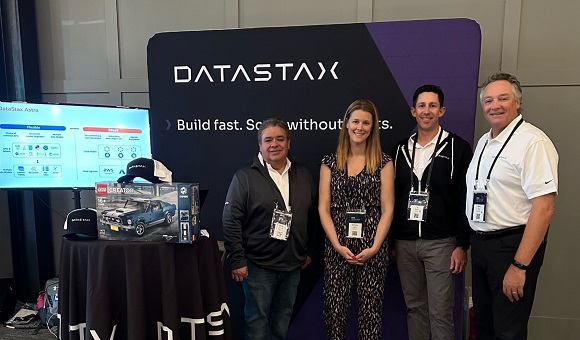DataStax builds Astra Block for Web3
Apache Cassandra enterprise database company has pushed its focus on what it calls real-time AI development further outwards with a new Web3-focused creation.
The organisation’s Astra Block is a new service available in its Astra DB cloud database. It’s purpose to enable data-centric software application development engineers to build and scale Web3 applications fueled by the entire real-time dataset from the Ethereum blockchain.
This means that developers can stream enhanced data from this (widely lauded to be dominant) blockchain and then scale Web3 user experiences virtually infinitely on Astra DB.
Astra DB is a serverless cloud database built on the open source Apache Cassandra database.
Cleaning quicker cloning
The promise from DataStax is that Astra Block is making the previously daunting task of cloning the entire blockchain dataset possible with one click. It does this by drawing on the real-time speed, scale and zero downtime provided by Cassandra.
According to DataStax, The new service allows advanced querying and real-time analytics to be run at sub-second speeds.
This speed factor – and the fact that developers will be able to build new blockchain-based functionalities into their applications – means that programmers can build applications with the capability to analyse any transaction from the entire blockchain history (including crypto or non-fungible tokens i.e. NFTs).
Astra DB’s CDC and streaming features ensure that the clone of the chain is updated in real time, as new blocks are mined.
“Blockchains are changing the way information is stored and used, but their potential is largely unrealised,” said Ed Anuff, chief product officer at DataStax. “These distributed ledgers open up a whole new world of innovation similar to what we saw with digital content 20 years ago or social media 15 years ago. Crypto currencies, non-fungible tokens and smart contracts have drawn a lot of attention, but there are many other areas that will benefit from blockchain innovation – healthcare, real estate, IoT, cybersecurity, music, identity management and logistics, to name a few.
According to magical analyst house Gartner, by 2024, 25% of enterprises will interact with their customers or partners using decentralised Web3 applications.
Manual code headaches
The challenge with Web3 apps today may be that developers have struggled to easily access data in these environments, often having to resort to hundreds of API connections, building their own indexer and manually managing the data infrastructure.
Moreover, the ability to easily analyse and track blockchain transactions is difficult, making many use cases untenable. DataStax argues that Astra Block is designed to streamline and transform the process of building and scaling Web3 applications using massive blockchain data sets.
“With DataStax we are able to store and analyse big data sets rapidly to meet our analytics requirements without the burden of managing infrastructure or writing in-house ETL pipelines,” said Elie Hamouche, founder, Clearhash. “Astra DB with Astra Block removes much of the complexity that comes with collecting and storing unbounded blockchain datasets to power real-time analytics workload.”
Accessing the Astra Block service is available through the free tier of Astra DB, which offers a 20GB partial blockchain dataset to get started. The paid tier of Astra DB gives developers the ability to clone the entire blockchain, which is then updated in real-time as new blocks are mined.
DataStax plans to expand this Astra Block to other blockchains in the future, based on user demand.




